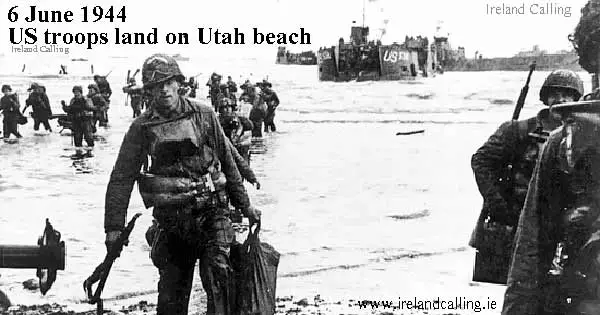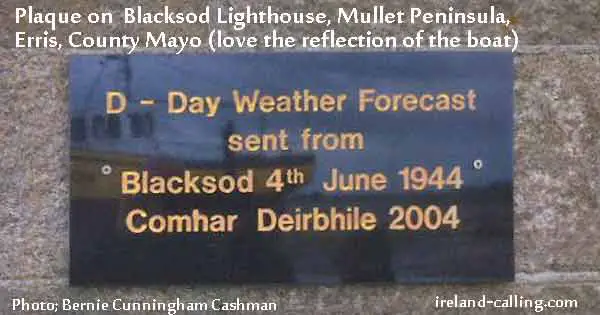The D Day landings signalled the beginning of the end of the Second World War.
Things may have turned out differently had it not been for a report from an Irish lighthouse keeper.

On 3 June 1944, Ted Sweeney delivered a weather forecast from westerly Co Mayo. His report convinced the Allied Forces to delay their attack for 24 hours.
The Americans had been keen to invade on the 5 June, but the British were more cautious and wanted to wait until the weather was more suitable for such a vital operation.
The US Army Air Force and the British Royal Air Force and Royal Navy had several observation points and reports from meteorologists, but the report from Blacksod on Mullet peninsula, Co Mayo was vital as it was positioned in such a relevant spot.
It was Europe’s first land based observation station that was capable of taking professional readings of Atlantic westerly weather systems.
These were the weather systems that 5,000 ships and 11,000 aircraft would have to travel through in order to reach the Normandy beachfront.
Ireland was neutral during the war but always sent meteorological reports to Britain as this was part of the Independence agreement that came shortly after the First World War.
On 3 June, when Sweeney delivered his forecast as normal, he had no idea what important decisions were being debated on the strength of his report.

In an interview in 1994, Sweeney said: “I was sending an hourly report 24 hours a day and night. It had to be phoned into London, (Dunstable). We got a query back.
“They asked for a check. ‘Please check and repeat the whole report.’ I was wondering what was wrong. I thought I had made some error or something like that. They sent a second message to me about an hour later to please check and repeat again. I thought this was a bit strange so I checked and repeated again. It never dawned on me that this was the weather for invading or anything like that. When I checked the report, I said: ‘Thanks be to God, I was not at fault anyway.’ I had done my job and sent over a correct reading to London.”
The allied forces also had 6th and 7th June pinpointed as possible dates as the moon and tide conditions were ideal.
Sweeney’s report revealed that the weather would be too dangerous for the invasion to take place on 5 June. The English Channel would be experiencing gale force winds, low clouds and heavy showers.
In the following days, Sweeney’s reports revealed that the weather was clearing and General Dwight D Eisenhower gave the order for the D Day Landings to take place on 6 June.
This newsreel is from June 9, 1944 and shows the allied invasion of German occupied Northern France at Normandy Beach.
newsletter.html”]
history.html
Irish weatherman’s crucial role in D Day Landings
